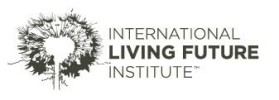This exception outlines compliance pathways for formaldehyde-containing products and materials. The General Pathway is available to all formaldehyde-containing products. Project teams using the following specific materials types and/or applications may choose to use an applicable Alternative Compliance Pathway:
- Composite Wood Materials (Non-Structural)
- Composite Wood Members (Structural)
- Foam Board Insulation (Phenol Formaldehyde-only)
Manufacturers and project teams using this Exception, which only addresses formaldehyde, should be aware that compliance with I10 Healthy Interior Performance requires VOC emissions testing compliance for a larger suite of chemicals.
GENERAL PATHWAY (Available to all products):
Manufacturers of formaldehyde-containing products must demonstrate that emissions levels in the final product comply with the thresholds determined by one of the approved emissions standards outlined in the table below. Conformant product certifications that use one of the standards in the table are listed in the Health & Happiness Petal Handbooks, under CDPH Clarifications.

Products manufactured in the region defined as Oceania may use the testing standards and formaldehyde limits identified in exception HH-005 Product Air Quality Testing in Oceania (I08-E10 in LBC 3.1) to demonstrate compliance with the General pathway.
ALTERNATIVE COMPLIANCE PATHWAYS:
Composite Wood Materials (Non-Structural):
Interior composite wood materials, defined as all particleboard, medium density fiberboard, and hardwood plywood, may contain formaldehyde, if labeled by a Third-Party Certifier (TPC) or declared by the manufacturer with one of the following standards, to demonstrate compliance with maximum allowable emissions of formaldehyde for each composite wood product type:
- California Air Resources Board (CARB) Airborne Toxic Control Measures (ATCM) Phase II
- Toxic Substances Control Act (TSCA) Title VI
- E1 or E0 classification formaldehyde limit when tested to EN 717-1
- Super E0, E0 and E1 classification (and E1 for MDF and thin MDF only) when tested to the relevant Australian and New Zealand Standards (AS/NZS) by a laboratory accredited to ISO 17025, the National Association of Testing Authorities (NATA), or International Accreditation New Zealand (IANZ).
These products can alternatively use the approved testing standards outlined in the Compliant Standards and Emissions Thresholds table above, to demonstrate that the product does not emit greater than the following CARB/TSCA Title VI emission standards for formaldehyde:
- Hardwood plywood – 0.05 parts per million (ppm)
- Particleboard – 0.09 ppm
- MDF – 0.11 ppm
- Thin MDF – 0.13 ppm
As a final alternative, manufacturers may also submit documentation from an EPA TSCA Title VI TPC or CARB demonstrating that the product in question qualifies for reduced testing and/or third-party certification exemption if the product uses NAF or ULEF resins. Composite wood products and finished goods using urea-formaldehyde or melamine formaldehyde resins are not eligible for the NAF or ULEF resin exemption.
Composite Wood Materials (Structural):
Structural composite wood members, including sheet goods, may contain formaldehyde in NAF or ULEF moisture-resistant adhesives if they meet The Engineered Wood Association (APA) definitions of, and applicable construction standards for, “engineered wood products” detailed in APA Technical Note J330D, published July 2018. Note J330D lists USA and Canadian production specifications for structural wood, and compares the formaldehyde emissions to other international specifications and formaldehyde emissions thresholds for these products, which are additionally accepted as demonstrating compliance for the purposes of this Exception.
Alternatively, manufacturers of structural composite wood members may demonstrate compliance to EN 717-1 E1 emissions limits (<0.124 mg/cu m (milligrams per cubic meter) formaldehyde). In Oceania, super E0, E0 and E1 classification may demonstrate compliance when tested by an ISO 17025 accredited laboratory to the relevant Australian and New Zealand Standards (AS/NZS).
Foam Board Insulation:
Foam board insulation may contain phenol formaldehyde polymers if the manufacturer or supplier can demonstrate compliant levels of free/residual formaldehyde by testing the polymer in accordance with one of the following standards and document that test results were below the CARB/TSCA Title VI formaldehyde limits (content or emissions):
- ISO 11402 (Formaldehyde content)
- EN 717-1 (Formaldehyde emissions), or
- one of the Approved Product Emissions Standards/Testing Methods or an equivalent standard
Foam insulation is subject to all other Red List requirements.
—
Date added: January 2020
Date updated: January 2021
Relevant superseded and retired exceptions:
I10-E6 9/2013 Glass-Mat Gypsum Sheathing
I10-E9 3/2013 Phenol Formaldehyde in Mineral Wool Insulation
I10-E10 8/2008 Structural Composite Wood Members
I10-E11 1/2009 Composite Wood Sheet Goods
I10-E22 6/2016 Formaldehyde in Systems Furniture Laminate
I10-E23 5/2017 Phenol Formaldehyde Polymers in Foam Board Insulation
Need more help with this?
Don’t hesitate to contact us here.



